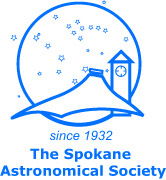In my pre-pandemic articles I focused on a well placed constellation for the month. This month I’d like to focus on the Virgo galaxy cluster, in lieu of the whole constellation of Virgo – I’m trying not to write a tome here! Some time ago, around this time of year, I wrote about Coma Berenices, another great galaxy hunting constellation, and as I exclaimed in that article: “spring is galaxy season!”. The inclination of the ecliptic, the plane of our solar system, with the plane of our own galaxy, means that around the vernal equinox we have that beautiful band of stars, the Milky Way, situated around the horizon. This orientation leaves a clear view out of our galactic disk, free from the obscuring effects of relatively local dust and gases. Seeing beyond our own galaxy, we are mostly left to see the myriad of other “island universes” (a term coined by the philosopher Immanuel Kant).

To observe galaxy clusters is to begin to observe our universe at scale of its largest structures. The description “The Cosmic Cobweb” is sometimes used to describe the clumps, knots and filaments of matter, as well as the large and larger voids between them. The large scale structure of the universe has also been likened to soap bubbles, with the borders and intersections of the bubbles representing the filaments and nodes of matter. In our corner of the Cosmos, our 10 Million light year (Mly) diameter Local Group of galaxies, dominated by the Milky Way, the Andromeda Galaxy and M33, along with approximately 80 smaller dwarf and irregular galaxies, are gravitationally connected to the Virgo Cluster. With a diameter of 15 Mly the Virgo Cluster is the closest galaxy cluster to our own Local Group, at a distance of about 54 Mly, and it is far more densely populated with approximately 1500 members. The Virgo cluster is not much larger than our Local Group but has far more members, her, the Virgo Cluster and our Local Group, along with approximately 100 other groups and clusters, form the Virgo Supercluster The immense gravity of the the Virgo Supercluster attracts our own Local group, resulting in a phenomenon called Virgocentric Flow
As amateur astronomers, we enjoy the night sky with whatever instruments we have, however modest. Luckily, great examples of nearly every class of object exist for any size glass, and galaxy clusters are no different. The Virgo Galaxy cluster can be enjoyed with everything from binoculars on up! With a modest 8” scope, well over 200 objects are visible, and instruments capable of wide fields will often have half a dozen or more galaxies visible at a time!

